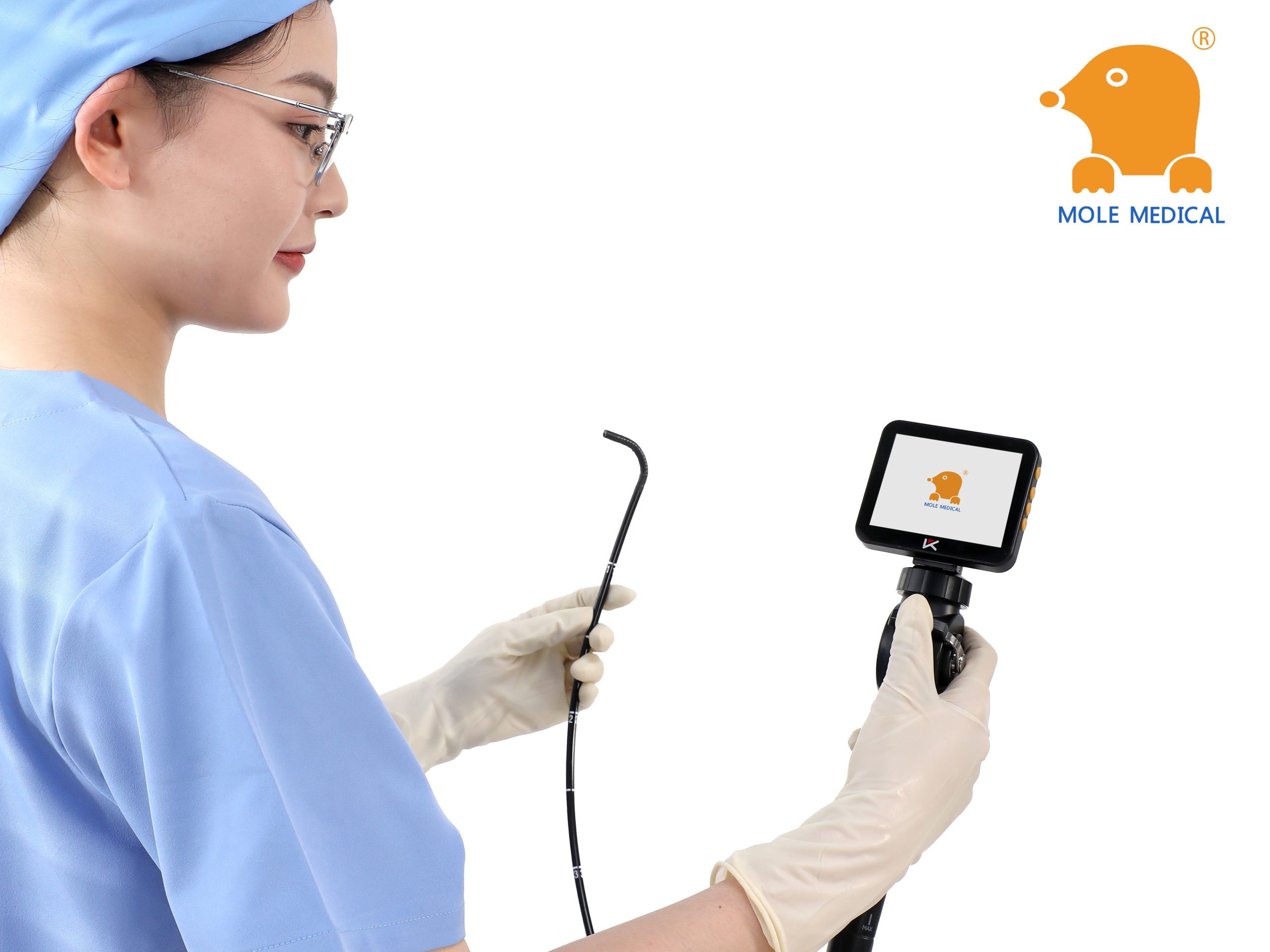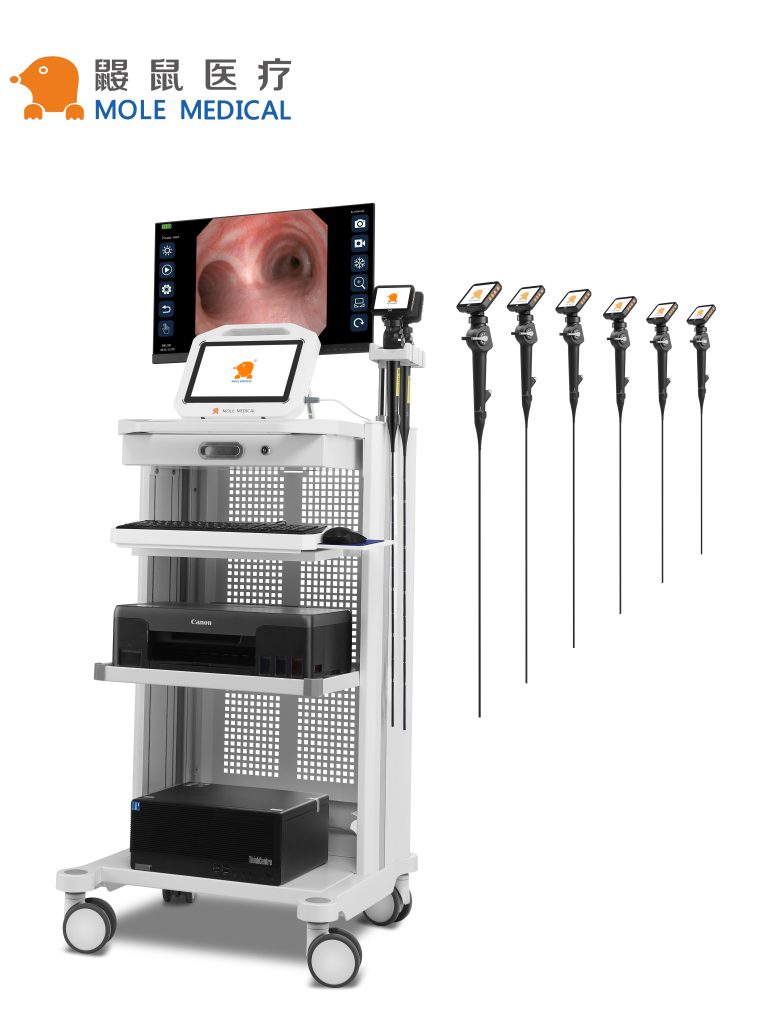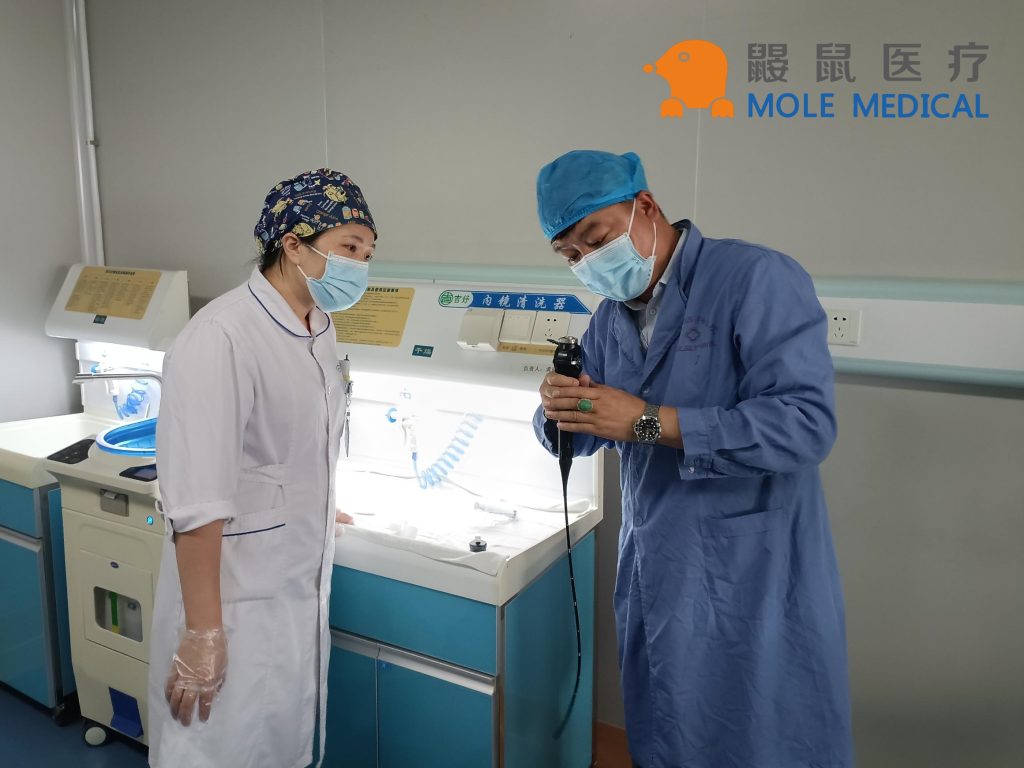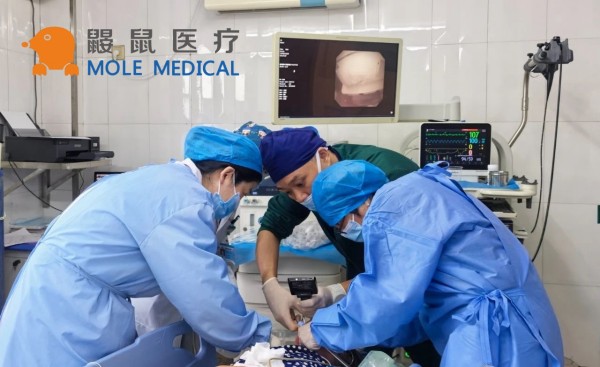From cleaning to maintenance: a holistic management strategy for Mole medical electronic bronchoscopes
Mar 04, 2025
In the modern medical field, electronic bronchoscope is an important tool for the diagnosis and treatment of respiratory diseases, and its accuracy and safety are directly related to the treatment effect and life safety of patients. Mole Medical’s electronic bronchoscopes are widely recognized for their superior performance and precise diagnostic capabilities. However, to ensure that this high-end equipment is always in top condition, a comprehensive management strategy from cleaning to maintenance is essential.

First of all, cleaning is the first step in the management of electronic bronchoscopes. Pre-cleaning must be carried out immediately after each use to remove mucous membranes, blood and dirt on the body of the mirror to prevent the residue from coagulating leading to subsequent cleaning difficulties. After pre-cleaning, the equipment should be transferred to the disinfection center for thorough cleaning, disinfection and sterilization. This includes wiping the lens and reusable components with a suitable disinfectant, such as 70% alcohol or chlorine, and flushing the work channel with a high pressure water gun to ensure there are no dead ends. In addition, regular and thorough tube cleaning of the electronic bronchoscope is required to prevent sputum and bacterial buildup and ensure patient safety.

After the cleaning work is completed, the maintenance can not be ignored. The camera of the electronic bronchoscope is its core component, and its clarity and accuracy need to be checked regularly, and professional technicians are required to calibrate and adjust if necessary. At the same time, the battery of the device needs to be charged regularly to avoid overuse to extend the battery life. Software updates are also an important part of maintenance, doctors should pay attention to software updates, timely upgrades to fix potential vulnerabilities and errors, and ensure that the device is fully functional.
In addition to daily cleaning and maintenance, doctors also need to pay attention to operational norms when using electronic bronchoscopes. A good understanding of the histological and cytological features of the lesion site is a prerequisite for accurate diagnosis, and doctors need to continuously learn and accumulate experience in their daily work. At the same time, in the process of examination and treatment, doctors need to pay close attention to the reaction of patients, timely adjustment of operational strategies to ensure patient safety.

The excellent performance of the Mole medical electronic bronchoscope is not only reflected in its high-precision diagnostic ability, but also reflected in its wide range of applications. The device can not only be used for the diagnosis of various respiratory diseases such as lung tumors and lung infectious diseases, but also perform local irrigation and drug administration operations during the examination process, directly acting on the lesion site and improving the therapeutic effect. In addition, its design fully considers the clinical needs and patient comfort, easy to operate and easy to master, providing doctors with great convenience.
A comprehensive management strategy from cleaning to maintenance is the key to ensure the performance and safety of the mole medical electronic bronchoscope. Through strict cleaning and disinfection, regular maintenance and standardized operation and use, we can ensure that this high-end equipment is always in the best condition to provide safer and more efficient diagnosis and treatment services for patients with respiratory diseases.
Categories
Latest Articles

Disposable Nephroscopes: Redefining Safety & Efficiency in Urology
Introduction The shift towards minimally invasive urological surgery has found a pivotal ally: the disposable nephroscope. As traditional reusable scopes grapple with persistent biofilm contamination risks and soaring sterilization costs, the global medical community is rapidly adopting single-use solutions. This article analyzes the clinical value, technological evolution, and dynamic innovation landscape driving this transformative shift. ... Read more

Disposable Video Laryngoscope Blades: The Ultimate Solution for Preventing Cross-Contamination
In the operating room, as the cold light of a video laryngoscope illuminates a patient’s airway, an age-old medical challenge is being redefined: How can life-saving instruments avoid becoming vectors of infection? Jiangsu MoleMedical drives an innovative safety revolution—replacing reusable devices with single-use, sterile laryngoscope blades that create a pure barrier for critical airways. Traditional video ... Read more
-2.jpg)
FDA & CE Approved Video Laryngoscope: What Makes It Stand Out?
Introduction In high-pressure emergencies and precision-driven operating rooms, video laryngoscopy is revolutionizing airway management. Mole Medical’s FDA and CE-certified technology replaces tactile-dependent “blind intubation” with real-time visual navigation – enhancing safety, accuracy, and clinical outcomes worldwide. Why Certification Matters Mole Medical’s dual certifications validate its global compliance and performance: FDA Clearance: Rigorous validation of safety/efficacy ... Read more

Mole Medical Showcases Advanced Endoscopy Solutions at CMEF Autumn 2025, Driving Global Partnerships
Guangzhou, China – September 26-29, 2025 – The 92nd China International Medical Equipment Fair (CMEF Autumn) concluded successfully on September 29th at the Canton Fair Complex in Guangzhou. Mole Medical Technology Co., Ltd. (Mole Medical) made a significant impact at the event, drawing global medical professionals and partners to its booth (Hall 2.1, Stand Q24) ... Read more

How to Use Disposable Ureteroscopes Safely and Efficiently
In the field of urology, the application of disposable electronic ureteral-kidney pelvis endoscopy catheters is leading the technological innovation in minimally invasive surgeries. According to the 2024 multi-center research data from China’s urology department, among the over 5,000 surgeries included, the patient group using disposable catheters performed significantly better in key indicators such as operation ... Read more



